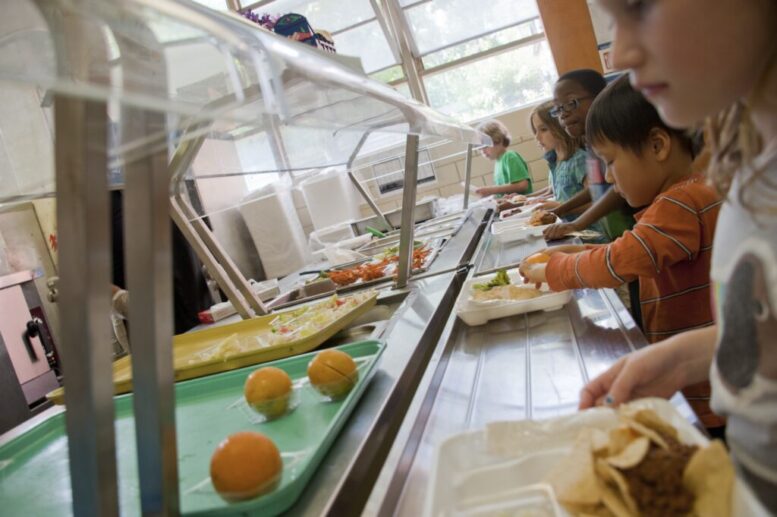BY SUSAN TEBBEN
The most recent state budget made changes to allow more students to be fed at no cost, but the battle to quell child hunger is still ongoing in Ohio.
The budget bill passed last year provided more than $4 million in funding to allow any students qualified for reduced-price of free breakfast and lunch can get the meals at no cost for the 2023-2024 school year.
It’s not quite the universal meals that school nutrition directors had asked for when budget talks began, but the final budget’s school meal provisions are progress in the right direction, child and education advocates in the state concluded.
The programs that are still attempting to help stem the flow of student hunger are seeing the struggles that inflation has on the cost of food, and Katherine Ungar, senior policy associate with the Children’s Defense Fund of Ohio, said the stigma of the income-based school food programs is still a barrier.
“It’s creating these categories that can create that stigma,” said Ungar.
Ohio has taken strides to help in the future by pledging to use federal dollars to establish a summer program that will give low-income families with child of school-aged children “grocery-buying benefits” while schools are closed, according to the USDA, who estimates more than 29 million children nationally could benefit.
[RELATED: Which states will join the new summer meal program for low-income kids? Here’s the list.]
“During the summer months, we estimate almost 1 million kids … lose access to meals,” Ungar said.
CDF-Ohio researched the whole-child impacts of categories like housing, health care and food insecurity. In fiscal year, 2023, the group’s annual data profiles showed an increase in the state’s students who were eligible for reduced-price or free school meals and considered “economically disadvantaged.”
The number of kids qualifying for the no-cost or low-cost lunches, for which any student in a household with up to 185% of the federal poverty line is eligible, when from 46.6% in the 2021-22 school year to nearly 50% in the 2022-23 school year.
This new summer benefit will be eligible to about 837,000 Ohio children, according to Ungar, and the economic impact of the benefit could bring $150 million into local economies.
The Summer Electronic Benefit Transfer Program (EBT) gives eligible families who apply pre-loaded cards with $40 per child per month. The EBT program works in conjunction with Supplemental Nutrition Assistance Program (SNAP) benefits, Women, Infants and Children (WIC) funds and other nutrition assistance efforts.
But the program can only be used if eligible families apply. Children who are certified as eligible for free or reduced-price meals at school would be eligible for the Summer EBT as well, but still have to apply through the same process as the free-or-reduced-lunch application.
“We know there are families who qualify but have not completed the application form,” Ungar said. “Some families may not think they’re eligible, but it’s important that anyone who could be eligible applies, so that those benefits can get to the people who need them.”
A similar program was available during the COVID-19 pandemic, and the USDA found that the program decreased “children’s food hardship” by 33%, and took between 2.7 and 3.9 million out of hunger across the country.
According to research by the Center for Community Solutions, the pandemic EBT program brought Ohio children an estimated $2.2 billion in nutrition assistance between Spring 2020 to Summer 2023, the end of the pandemic program.





